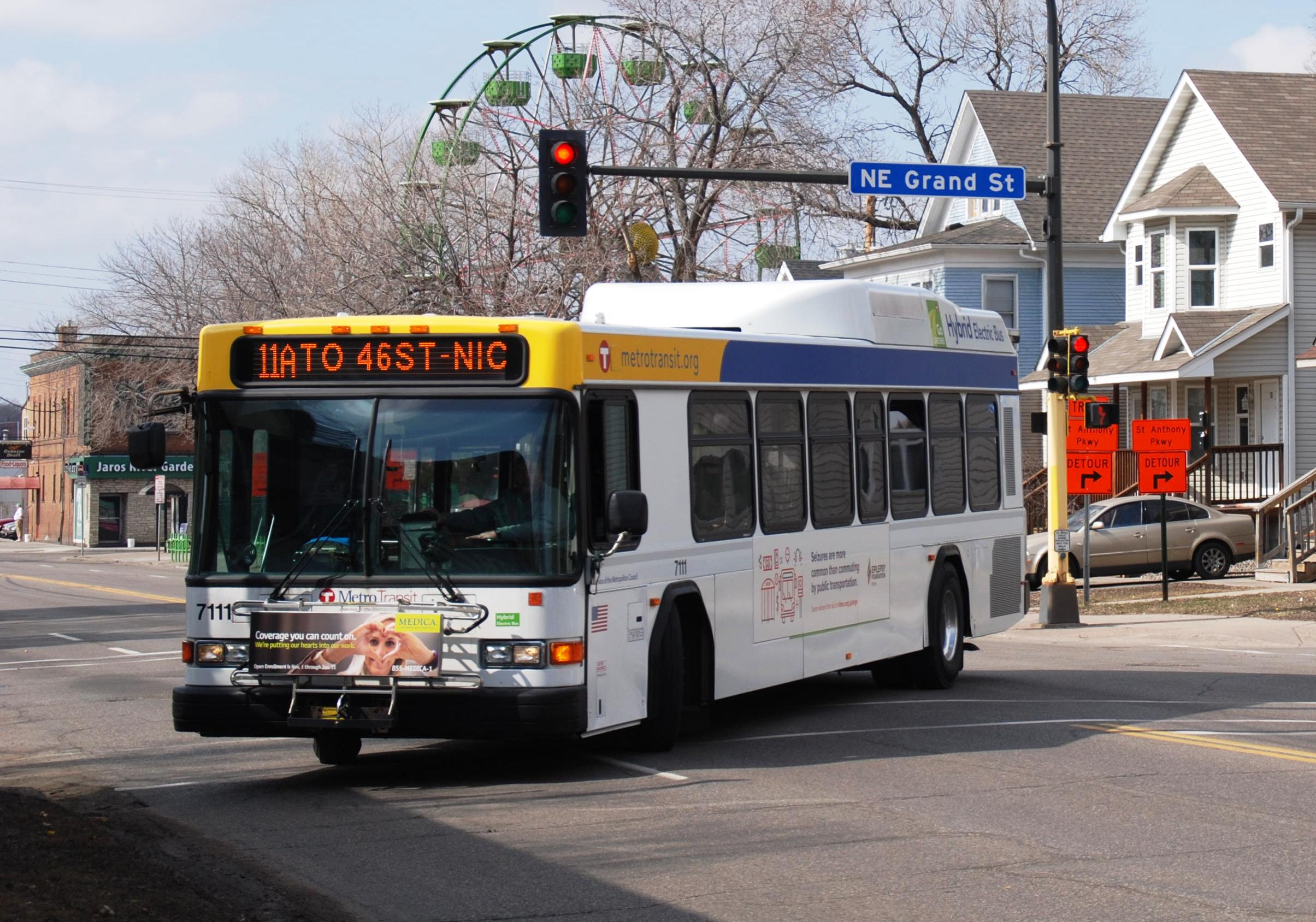 As a Northeast Minneapolis resident, Angela Washington rides Route 11 nearly every day to get to and from her work as a caretaker in south Minneapolis.
As a Northeast Minneapolis resident, Angela Washington rides Route 11 nearly every day to get to and from her work as a caretaker in south Minneapolis.
On more than one occasion, she’s missed the bus and found herself waiting. And with service every half-hour during the day it isn’t always a short wait, either.
“If you miss the 11, you’re donezo,” Washington said during a recent northbound trip home. “It’s like, ‘Oh my goodness, call a helicopter because I have to get to work.’”
Now, though, Washington and others who ride Route 11 won’t have to wait nearly as long as they used to.
Beginning on Saturday, March 19, a portion of Route 11 will join the Hi-Frequency Network – a collection of high-ridership, urban routes with trips every 15 minutes throughout the day on weekdays and on Saturdays. There will be 30-minute service during the evenings and on Sundays.
Parts of routes 5, 6, 10, 18, 19, 21, 64, 84, 515 and all of Route 54 are also a part of the Hi-Frequency Network, along with the METRO Blue and Green lines.
The improvements on Route 11 effect only a portion of the service – between the I-35W and 46th Street Station and 29th Avenue NE and Grand Street NE. Trips that continue to the Columbia Heights Transit Center will operate every 30 minutes.
Route 11 was targeted for improved service because of residential and commercial growth in Northeast Minneapolis. It will also provide a better alternative for customers who are further from Central Avenue, where Route 10 operates, and routes 18 and 5 in south Minneapolis.
In south Minneapolis, Route 11 runs largely along Fourth Avenue South; in Northeast, the route crosses the Hennepin Avenue bridge and continues north on Second Street NE.
The majority of Route 11 customers travel to or from downtown Minneapolis, but it is also used as a crosstown service for those like Washington who travel to destinations outside the core.
“There are a lot of residents and jobs along the corridor, and offering a higher level of service makes transit more competitive with other alternatives,” Planner Kyle Burrows said. “Transit becomes a much more convenient and attractive option when service is so frequent you don’t have to consult a schedule.”
Among those looking forward to the increased service is Adam MacGregor, who uses Route 11 to get downtown for work and school throughout the week. “The benefit for me will not having to get places so early, because if I wait for the next bus a lot of times I’ll be late,” he said.
Dorothy Mulen, who has used Route 11 for the last 14 years, was even more enthusiastic.
“Amen,” she said after missing her bus and boarding after an extended wait. “Every 15 minutes? I might just faint.”
Route 11 At a Glance
Type: Urban Local
Service: Route 11 runs between the I-35W and 46th Street Station in south Minneapolis and Northeast Minneapolis, with service on Fourth Avenue South, Hennepin Avenue, Second Street NE, Lowry Avenue NE and Grand Street NE. As part of the Hi-Frequency Network, trips run every 15 minutes during the day on weekdays and Saturdays and every 30 minutes on nights and on Sundays. Service is provided between 4:30 a.m. and 1:30 a.m. every day of the week. There are trips every 30 minutes to the Columbia Heights Transit Center.
Route length: Approximately 10 miles
Stops: 88 northbound, 91 southbound
Vehicles: 40-foot standard and hybrid-electric buses
History: Both 4th Avenue South and 2nd Street NE were served by horsedrawn streetcars, and later by electric streetcars. From 1910 to 1939, 2nd Street NE also hosted the Minneapolis Anoka & Cuyuna Range streetcars that followed East River Road and Coon Rapids Boulevard to Anoka, the predecessor to Route 852. When bus service began, Route 9 operated on 4th Avenue South and Route 18 operated on 2nd Street NE.
Other service changes taking effect on March 19
• To improve service in the northwest metro, Route 721 will improve from 60- to 30-minute service on weekends and operate an hour later on weekdays. On Route 724, 30-minute service will also start earlier on weekends.
• Route 46 will be extended to Opportunity Partners in Minnetonka for select trips. This extension, combined with a connection to existing Route 18 service on Nicollet Avenue, will replace Route 568.
• Two mid-day trips will be added in each direction on Route 467, with service between downtown Minneapolis and the Kenrick Avenue Park & Ride in Lakeville. This service is a preview for the METRO Orange Line (BRT on I-35W).
• For the first time since Marq2 opened in 2010, running time will be added and some bus stop assignments will be moved to better balance the number of buses in each stop group.
• On Route 3, downtown-to-downtown trips will begin earlier in the day and continue through 1:15 a.m., all days of the week. The number of weekday trips that cover only portions of the route will be reduced.
In addition to these service changes, pocket schedules for routes detoured to Hennepin Avenue will be updated to reflect actual travel times and NexTrip information will become more accurate for these routes. There will also be some minor trip time adjustments to these detoured routes.
For a complete list of service changes, pick up Connect or visit metrotransit.org.